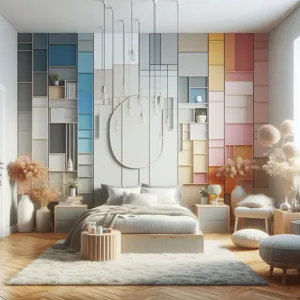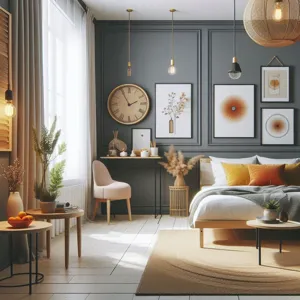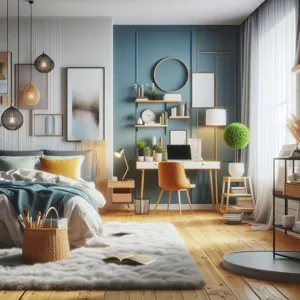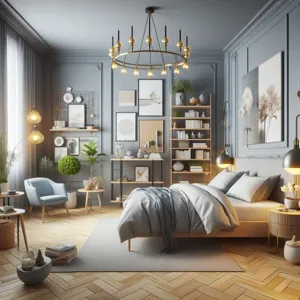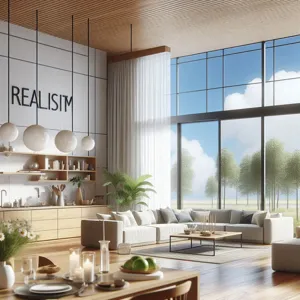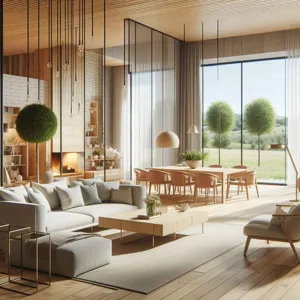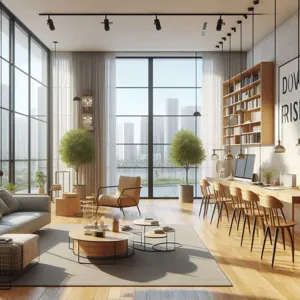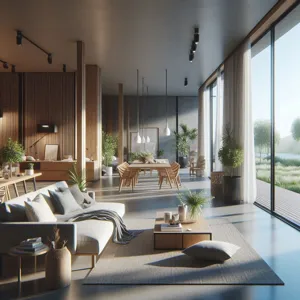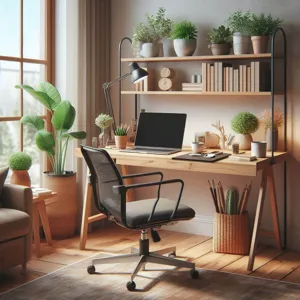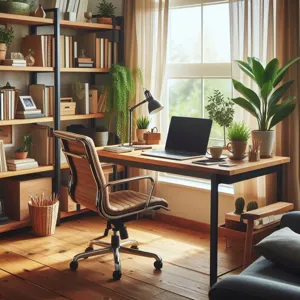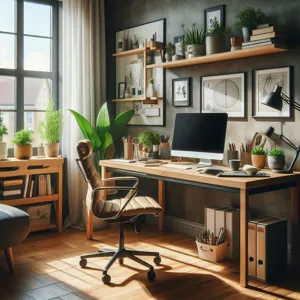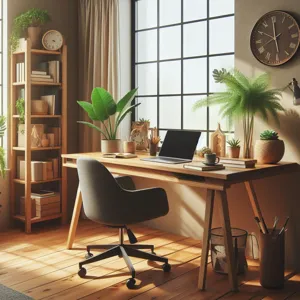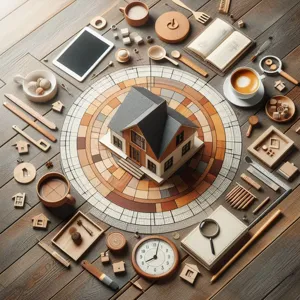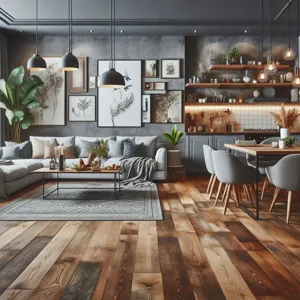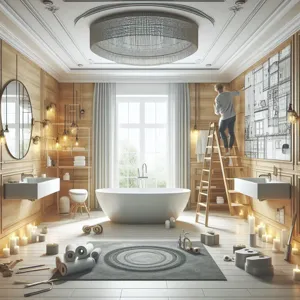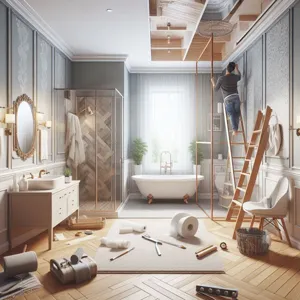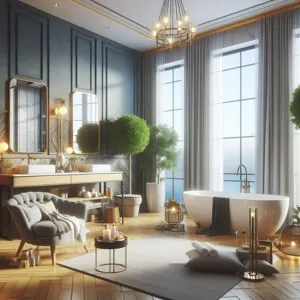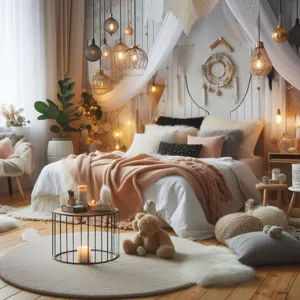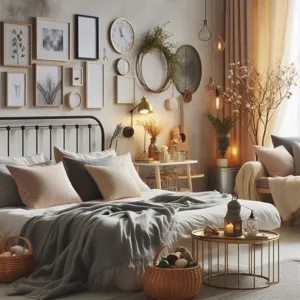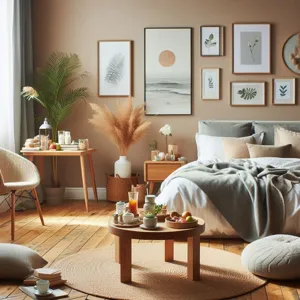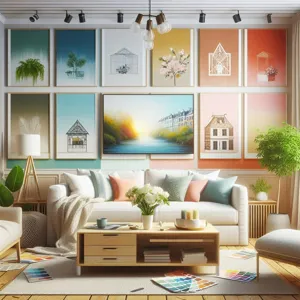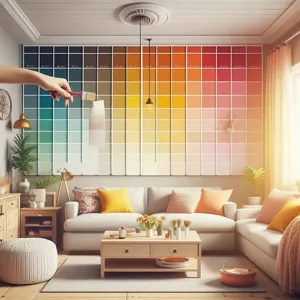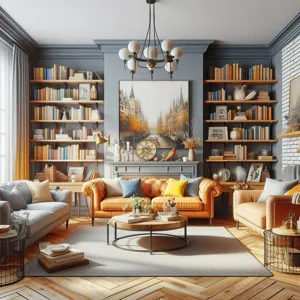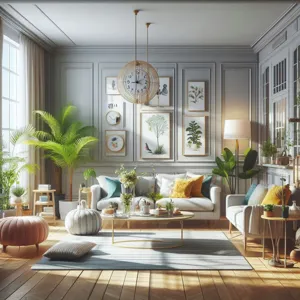In a world overflowing with possessions, the idea of a clutter-free home often feels like a distant dream.
The piles of unused items, scattered belongings, and overstuffed closets can create an overwhelming sense of chaos, making it difficult to relax and enjoy your living space. But fear not! Reclaiming your home doesn’t have to be an insurmountable task. In this blog post, we’ll explore ten proven strategies that will help you declutter your home effectively, allowing you to create a serene and inviting environment. From adopting minimalist principles to implementing practical organizational techniques, these strategies will empower you to sift through the clutter and find peace in your surroundings. Whether you’re tackling a single room or your entire house, these tips will guide you on your journey to a more organized, harmonious living space. Get ready to breathe new life into your home and experience the freedom that comes with a decluttered sanctuary!
1. Understanding the Benefits of Decluttering
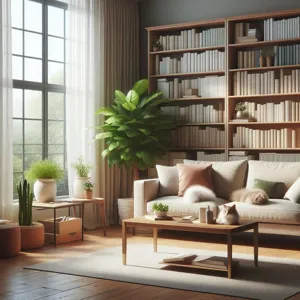
Decluttering is more than just a trendy buzzword; it’s a transformative practice that can significantly enhance your quality of life. At its core, decluttering means simplifying your living space by removing unnecessary items, which can lead to a myriad of benefits that extend beyond mere aesthetics.
First and foremost, decluttering can create a sense of physical and mental space. When you clear out the clutter, you pave the way for a more organized environment, allowing for easier navigation through your home. This newfound order can lead to reduced stress and anxiety levels, as studies have shown that a tidy space can promote a sense of calm and control.
Moreover, decluttering can enhance your productivity. A clean and organized environment fosters focus and creativity, making it easier to accomplish tasks without the distraction of unnecessary items vying for your attention. Imagine sitting down to work in a serene space, where everything you need is readily accessible, and nothing feels overwhelming. This streamlined approach can boost your efficiency and inspire you to tackle projects you may have been putting off.
Decluttering also offers a unique opportunity for self-reflection. As you sift through your belongings, you may discover items that no longer serve you or reflect who you are today. This process encourages you to evaluate your values and priorities, leading to more intentional living. By letting go of things that hold you back, you can make room for new experiences, relationships, and opportunities.
Additionally, a decluttered home can also improve your overall well-being. When your space is organized and free of excess, it can lead to a healthier lifestyle. For instance, you might find it easier to maintain cleanliness and hygiene, as surfaces are less cluttered and easier to clean. This can contribute to better air quality and a more peaceful atmosphere, ultimately supporting both your physical and emotional health.
Lastly, decluttering can be financially beneficial. By selling or donating items you no longer need, you can free up space and potentially make some extra cash. This practice not only reduces what you own but also fosters a sense of gratitude for what you have, encouraging more mindful purchasing in the future.
In summary, understanding the benefits of decluttering is the first step toward reclaiming your space. From reducing stress and enhancing productivity to promoting self-reflection and improving overall well-being, the advantages of a clutter-free home are numerous. As you embark on this journey, remember that each item you let go of is a step toward a more harmonious and fulfilling living environment.
2. Set Clear Decluttering Goals
Setting clear decluttering goals is the foundation for a successful and stress-free decluttering journey. Without specific objectives, the task can feel overwhelming, leading to frustration and stagnation. Start by envisioning what a decluttered space looks like for you—imagine an inviting living room free from clutter, a kitchen with organized cabinets, or a bedroom that offers a serene escape. These visions will serve as your guiding light.
Begin by breaking down your decluttering journey into manageable goals. Instead of saying, “I need to declutter my entire home,” focus on smaller, achievable targets such as “I will declutter my closet this weekend” or “I will tackle the kitchen drawers by the end of the month.” This approach not only makes the task feel less daunting but also allows for a sense of accomplishment as you check off each goal.
Consider using the SMART criteria—Specific, Measurable, Achievable, Relevant, and Time-bound—to help shape your goals. For instance, instead of setting a vague goal of “getting rid of clothes,” aim for “donating three bags of clothes I haven’t worn in the last year by the end of the month.” By setting clear, actionable goals, you will maintain focus and motivation throughout the decluttering process.
Additionally, write down your goals and place them in visible areas around your home to keep them top of mind. This constant reminder will encourage you to stay on track and reignite your commitment when the going gets tough. Remember, decluttering isn’t just about creating space; it’s about creating a sanctuary where you can thrive. With clear goals in place, you’re well on your way to reclaiming your space and fostering a more peaceful, organized home environment.
3. The 10-Second Rule: Quick Decisions for Items
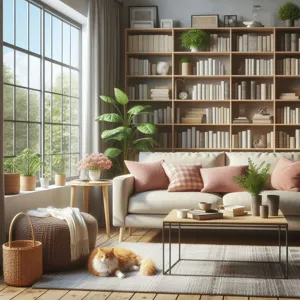
The 10-Second Rule is a simple yet effective strategy that can revolutionize the way you tackle clutter in your home. The premise is straightforward: when faced with an item, give yourself just ten seconds to decide its fate. This time constraint encourages swift decision-making, preventing you from succumbing to indecision or sentimentality that often leads to clutter accumulation.
As you hold each item in your hands, ask yourself a series of quick questions: Do I use it? Do I love it? Does it serve a purpose in my life? If the answer is no, then it’s time to let it go. This method promotes a mindset of practicality and clarity, steering you away from the emotional attachments that can cloud your judgment.
For instance, standing in front of a stack of books, the clock starts ticking. You’ve enjoyed some of them, but do you really need to keep every volume? Ten seconds later, you might find yourself placing three books in a donation pile, realizing that they can bring joy to someone else.
Applying the 10-Second Rule can instantly transform daunting decluttering tasks into manageable, bite-sized decisions. As you move through your space with this newfound efficiency, you’ll feel empowered by each choice you make, gradually reclaiming your environment from the grips of clutter. It’s a small change that can yield significant results, making your home not just more organized, but a space where you can truly thrive.
4. One Room at a Time: Creating a Focused Plan
When it comes to decluttering your home, the idea of tackling the entire space can feel overwhelming, often leading to procrastination and frustration. That’s why adopting a one-room-at-a-time strategy is not just practical—it’s transformative. By creating a focused plan, you can channel your energy and attention into a single area, allowing for a more thorough and satisfying decluttering process.
Start by selecting the room that feels most cluttered or the one that you spend the most time in. This could be your living room, kitchen, or bedroom—wherever you feel the most chaos. Once you’ve made your choice, set aside dedicated time to work in that space. It’s important to approach this with a clear mindset; aim for quality over quantity.
Break down the room into smaller sections—perhaps starting with a closet, a drawer, or a single shelf. This will help you avoid feeling overwhelmed by the sheer volume of items that need sorting. As you go through each section, ask yourself critical questions: Do I use this item regularly? Does it bring me joy? Is it functional? This reflective process not only helps you decide what to keep but also reinforces your relationship with the items that truly matter.
As you sort through your belongings, create designated piles: keep, donate, and discard. This visual representation of your decisions can be incredibly motivating. For items you’re unsure about, consider using the “30-day rule”—if you haven’t used it in the last month, it’s likely you won’t miss it.
After successfully decluttering one room, take a moment to revel in your accomplishment. Celebrate the newfound space and clarity that you’ve created. This sense of achievement will fuel your motivation to move onto the next room, making the entire process feel less daunting and more manageable. By focusing on one room at a time, you’ll not only reclaim your space but also cultivate a more intentional and harmonious living environment.
5. The Four-Box Method: Keep, Donate, Sell, Trash
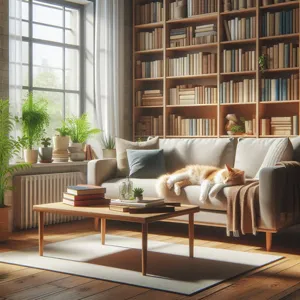
The Four-Box Method is a powerful and straightforward strategy that can transform the overwhelming task of decluttering into a manageable and efficient process. This method involves designating four distinct boxes, each with a specific purpose: Keep, Donate, Sell, and Trash. By categorizing your belongings in this way, you can quickly assess what you truly value and what is simply taking up space in your home.
**Keep Box:** Start by gathering items that you use regularly or have sentimental value. This box should contain essentials that contribute to your daily life and happiness. As you sort through your belongings, take a moment to reflect on each item’s significance. If it doesn’t spark joy or serve a purpose, it’s time to consider other options.
**Donate Box:** Next, focus on items that are in good condition but no longer serve you. These could be clothes that no longer fit, books you’ve read and won’t revisit, or kitchen gadgets collecting dust. By placing these items in the Donate box, you not only clear your space but also provide an opportunity for someone else to benefit from what you no longer need. Research local charities or shelters that accept donations, and feel good knowing your items will be put to good use.
**Sell Box:** This box is for items that have value and could be sold for a profit. Think of gently used electronics, furniture, or collectibles that are still in demand. Selling these items online through platforms like eBay, Facebook Marketplace, or local classifieds can help you recoup some of your expenses while decluttering your space. Plus, the extra cash can be a nice incentive to let go of the items you no longer want.
**Trash Box:** Finally, don’t forget to address the items that have outlived their usefulness. Broken appliances, expired products, or damaged goods belong in the Trash box. Disposing of these items responsibly is crucial—recycle whenever possible to reduce waste and help the environment.
As you work through the Four-Box Method, you’ll not only regain physical space in your home but also experience a profound sense of mental clarity. By being intentional about what you keep, donate, sell, and throw away, you pave the way for a more organized and peaceful living environment. This strategy isn’t just about decluttering; it’s about creating a home that truly reflects your lifestyle and values.
6. Digital Decluttering: Organizing Your Virtual Spaces
In today’s technology-driven world, our homes aren’t the only spaces that need decluttering; our digital lives often require just as much attention. Digital decluttering is the process of organizing your virtual spaces—be it your computer, smartphone, or social media profiles—to create a more streamlined and stress-free environment.
Start with your email inbox, which can quickly become a chaotic jumble of unread messages and promotional newsletters. Unsubscribe from anything that no longer serves you, and utilize folders or labels to categorize important emails. Setting aside just a few minutes each day to tackle your inbox can lead to a significant reduction in digital clutter over time.
Next, turn your attention to your files and folders stored on your devices. Take the time to delete duplicate files, outdated documents, and unnecessary downloads. Create a logical folder structure that makes it easy to find what you need when you need it. Consider using cloud storage solutions for easy access and backup; not only does this free up space on your devices, but it also provides peace of mind knowing your important files are secure.
Social media can also contribute to digital clutter. Review your friend and follow lists, removing accounts that no longer resonate with your values or interests. Curate your feeds to ensure they inspire, motivate, and inform you rather than overwhelm you with noise.
Finally, don’t forget about your smartphone apps. Regularly assess the apps you have installed—delete those you rarely use, and organize the remaining ones into folders based on categories like productivity, entertainment, or health. This simple step can make navigating your device more efficient and pleasant.
By taking the time to declutter your digital spaces, you’ll not only enhance your productivity but also create a sense of calmness and control in your life. A tidy digital environment will help you reclaim your focus and make your home feel more spacious and organized in every sense of the word.
7. The 30-Day Declutter Challenge: Daily Tasks to Follow
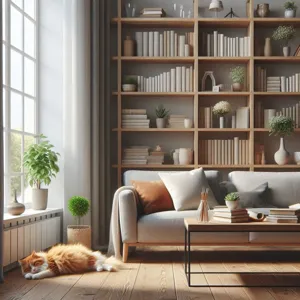
The 30-Day Declutter Challenge is a structured yet flexible approach designed to help you tackle clutter systematically, one day at a time. Each day of the month focuses on a specific area or type of item, allowing you to break down the seemingly overwhelming task of decluttering into manageable daily tasks. By dedicating just a few minutes to each challenge, you’ll find that you can significantly transform your space without feeling overwhelmed.
On Day 1, start with your closet. Pull out items you haven’t worn in the past year and make decisions about what to keep, donate, or discard. Day 2 might focus on your kitchen junk drawer—empty it out and sort through the odds and ends, keeping only what you truly need. As the days progress, you’ll tackle specific categories like books, papers, bathroom products, or even that ever-mysterious “catch-all” space in your home.
The beauty of the 30-Day Declutter Challenge lies in its simplicity and the sense of accomplishment that comes with each completed task. By the end of the month, you’ll not only have a more organized space but also a renewed sense of clarity and peace in your home. Additionally, you’ll cultivate a mindset geared towards maintaining a clutter-free environment, making it easier to uphold these new habits long after the challenge is over. So grab a calendar, commit to the journey, and watch as each small step leads to a significant transformation in your living space!
8. Utilizing Storage Solutions: Bins, Baskets, and Shelves
When it comes to decluttering your home, effective storage solutions are your best allies. Bins, baskets, and shelves can transform chaotic spaces into organized havens, making it easier to reclaim your space and establish a sense of order.
**Bins** are fantastic for storing items out of sight while keeping your home neat. Available in various sizes, colors, and materials, bins can be tailored to suit any room’s aesthetic. Use clear plastic bins to easily identify contents, or opt for decorative fabric bins to add a touch of style. Designate specific bins for different categories—seasonal decorations, sports gear, or craft supplies—and label them for quick access. This not only keeps your belongings organized but also helps streamline your cleaning routine.
**Baskets** offer a charming and versatile storage solution. They can be placed in living rooms to hold blankets, in bathrooms for toiletries, or even in kids’ playrooms to corral toys. The natural textures of woven baskets can add warmth to your decor, making them a perfect choice for those who wish to blend functionality with aesthetics. Plus, baskets are easy to move around, so you can rearrange your space as needed without much hassle.
**Shelves** serve as both functional and decorative elements in any room. Floating shelves can be installed in corners or above furniture to utilize vertical space effectively, while bookcases can provide ample storage for everything from books to decorative items. Consider incorporating shelves into your storage strategy by using them to display family photos, plants, or your favorite books. This not only declutters your surfaces but also adds personality to your home.
By thoughtfully incorporating bins, baskets, and shelves into your organizational strategy, you can create a more manageable and visually pleasing environment. These storage solutions not only help you keep your belongings in check but also foster a sense of calm and tranquility in your living space, making it a joy to come home to.
9. Creating a Maintenance Routine to Prevent Clutter
Creating a maintenance routine is essential for preventing clutter from creeping back into your home after you’ve invested time and effort into decluttering. Think of it as establishing a system that keeps your space organized and harmonious, allowing you to fully enjoy the tranquility of your newly reclaimed areas.
Start by dedicating a few minutes each day to tidy up—this could be as simple as putting items back in their designated places or doing a quick surface clean in high-traffic areas. Incorporate a weekly “reset” day where you tackle specific tasks: dusting, vacuuming, and reorganizing any spaces that may have started to gather odds and ends.
To ensure that you stick to this routine, consider setting reminders on your phone or incorporating these tasks into your daily schedule. Involving other household members can also make this process more manageable and turn it into a fun bonding activity. Create a chore chart to keep everyone accountable, and reward your family for their efforts.
Don’t forget to assess your belongings regularly—perhaps every month or season. This proactive approach allows you to evaluate what’s still serving you and what can be let go of, preventing the buildup of unnecessary items. By establishing a maintenance routine, you not only sustain the decluttered state of your home but also cultivate a mindset of mindfulness and intentionality around your possessions, ensuring that your living space remains a serene sanctuary.
10. Mindset Shifts: Overcoming Emotional Attachments
Decluttering your home isn’t just a physical task; it’s also a mental and emotional journey. One of the most significant barriers to an organized space is the emotional attachment we often develop toward our belongings. It’s common to hold onto items that evoke memories, even if they no longer serve a purpose in our lives. To successfully reclaim your space, you must first navigate these emotional hurdles and adopt a mindset that prioritizes your well-being over sentimental value.
Begin by recognizing that the memories associated with objects can exist independently of the items themselves. Consider taking photographs of cherished items instead of keeping the physical objects. This way, you preserve the memory without the clutter. When faced with a difficult decision about an item, ask yourself questions like, “Does this enhance my life?” or “Would I buy this again today?” This shift in perspective can help you assess your belongings with a more objective lens.
Moreover, embrace the concept of “letting go” as a form of self-care. Understand that by decluttering, you’re creating space not only in your home but also in your mind. Each item you release is an opportunity to welcome new experiences and possibilities into your life. Celebrate small victories along the way, whether it’s clearing out a single drawer or an entire room; these achievements reinforce the positive impact of your decluttering efforts.
Finally, surround yourself with support. Share your decluttering goals with friends or family who can offer encouragement and accountability. Their fresh perspectives can help you see the benefits of letting go, making the process feel less daunting. By shifting your mindset from attachment to liberation, you’ll find that decluttering becomes not just a chore, but a transformative experience that leads to a more peaceful and organized home. Embrace the journey, and watch as your space—and your mind—begin to flourish.
11. Involving Family: Making Decluttering a Team Effort
Decluttering can often feel like a daunting task, especially when you’re facing years’ worth of accumulated items. However, involving your family in the process can transform it from a solitary chore into an engaging team effort. This approach not only lightens the load but also fosters a sense of shared responsibility and unity within the household.
Start by organizing a family meeting to discuss the decluttering plan. Set clear goals together, such as which rooms need the most attention or how much time you can devote each weekend. This collaborative spirit will motivate everyone to pitch in and contribute their ideas on how to create a more organized and harmonious living space.
Assign specific roles for each family member based on their strengths and interests. Perhaps one person excels at sorting through books, while another enjoys tackling the toy bin. Encourage everyone to be involved in the decision-making process—after all, their input can be invaluable when deciding what to keep, donate, or toss. This not only makes decluttering more efficient but also ensures that everyone feels a sense of ownership over the final outcome.
To make the experience enjoyable, turn it into a game. Set a timer and challenge each other to see who can sort the most items in a given timeframe, or create a ‘treasure hunt’ for items that can be donated or recycled. Play some upbeat music to energize the atmosphere, and don’t forget to celebrate your achievements together, no matter how small. After a long day of decluttering, reward yourselves with a family movie night or a special meal to reinforce the idea that teamwork leads to success.
By involving your family in the decluttering process, you not only make the task more manageable but also create lasting memories and strengthen your family bond. As you reclaim your space together, you’ll find that the journey of decluttering can be just as rewarding as the clean, organized home that awaits you at the end.
12. Sustainable Decluttering: Eco-Friendly Disposal Options
As we navigate the journey of decluttering, it’s essential to consider not just the tidiness of our homes, but also the impact of our disposal choices on the environment. Sustainable decluttering focuses on eco-friendly methods that allow us to part with our belongings without contributing to landfill overflow or harming our planet.
Start by evaluating the items you’re ready to let go of. Instead of tossing them in the trash, consider donating gently used items to local charities or thrift stores, where they can find new life and benefit those in need. Many organizations welcome clothing, furniture, and household goods, offering a sense of purpose to your decluttering efforts.
For items that are no longer usable, recycling is a sustainable alternative that helps reduce waste. Check for local recycling programs that accept electronics, plastics, and other materials. Many cities offer designated drop-off points or curbside pickup for recyclable items, making it easier than ever to dispose of them responsibly.
If you’re dealing with larger items like old furniture or appliances, look into consignment shops or buy-back programs that can give your belongings a second chance while also putting a little extra cash in your pocket. Additionally, consider reaching out to community groups or online platforms dedicated to freecycling, where you can offer items to others in your area who may be in need.
Finally, for those items that simply cannot be reused or recycled, investigate eco-friendly waste disposal services that prioritize sustainability. Many of these companies focus on minimizing landfill contributions and may offer composting services or specialized disposal for hazardous materials.
By implementing these eco-friendly disposal options, you not only declutter your space but also contribute to a healthier planet. Adopting sustainable practices during your decluttering journey transforms the process into a responsible, feel-good experience—one that aligns with your values while creating a serene and organized home environment.
13. Celebrating Your Progress: Rewarding Yourself
Decluttering can often feel like an overwhelming task, but celebrating your progress is a powerful motivator that keeps the momentum alive. As you tackle the various spaces in your home, it’s essential to acknowledge the efforts you’ve put in and the milestones you’ve achieved, no matter how small they may seem.
Start by setting achievable goals for each decluttering session. Once you complete a designated area, like your kitchen countertops or a cluttered closet, take a moment to appreciate the transformation. Snap a before-and-after photo to visually document the difference. This simple act not only highlights your hard work but also serves as a reminder of how far you’ve come in the decluttering journey.
Rewards can take many forms, and it’s important to choose ones that resonate with you. Perhaps indulge in a favorite treat, take a well-deserved relaxing bath, or enjoy a night out with friends. If you prefer something more tangible, consider investing in a small home accessory or decorative item that complements your newly organized space.
Additionally, think about creating a “declutter diary,” where you jot down your achievements and feelings throughout the process. This journal can be a source of inspiration and motivation, reminding you of the liberation that comes with a clutter-free environment.
Remember, the journey to reclaim your space is not just about the end result; it’s about the experience along the way. By celebrating your progress and rewarding yourself, you create positive associations with decluttering, making it a more enjoyable and sustainable practice in your life. Embrace the joy of your accomplishments, and let that enthusiasm propel you to tackle the next project with renewed vigor!
14. A Minimalist Approach: Embracing Simplicity in Your Space
A minimalist approach is more than just a trend; it’s a lifestyle choice that promotes simplicity and intentionality in your home. Embracing minimalism means stripping away the excess to focus on what truly matters, creating a serene environment that enhances both your physical space and mental clarity. Imagine walking into a room where every object has a purpose, and every piece of decor is chosen with care—this is the essence of minimalism.
Start by evaluating each room in your home and asking yourself: Does this item serve a purpose? Does it bring me joy? If the answer is no, it may be time to let it go. This process doesn’t have to be daunting; tackle one area at a time and celebrate your progress. As you begin to declutter, you’ll notice a shift in your space. Surfaces become clearer, colors feel more vibrant, and the overall aesthetic transforms into one of calm and balance.
Incorporate functional furniture that serves dual purposes—think of an ottoman that doubles as storage or a coffee table that can transform into a workstation. This not only maximizes your space but also keeps clutter at bay. Additionally, consider adopting a neutral color palette with a few carefully selected accent pieces. This will create a cohesive look that feels open and airy, allowing your home to breathe.
Ultimately, embracing a minimalist approach is about making conscious choices that reflect your values and lifestyle. By prioritizing simplicity, you’ll create a sanctuary that fosters peace and promotes a more fulfilling way of living. As you reclaim your space, you’ll find that less truly is more, leading to a home that feels both inviting and invigorating.
15. Final Thoughts: Maintaining Your Decluttered Home
As you bask in the newfound serenity of your decluttered home, it’s crucial to remember that the journey doesn’t end here. Maintaining a tidy, organized space requires consistent effort and mindful habits. Start by establishing a daily routine that includes a few simple tasks: make your bed each morning, wash dishes immediately after meals, and allocate just ten minutes each day to put items back in their designated places. These small actions can make a significant difference in keeping clutter at bay.
Additionally, consider adopting the “one in, one out” rule—each time you bring a new item into your home, make it a habit to remove an old one. This strategy not only curbs excess accumulation but also encourages thoughtful purchasing decisions. To further reinforce your decluttered lifestyle, regularly reassess your belongings. Schedule seasonal decluttering sessions to evaluate whether certain items still serve a purpose or bring you joy.
Lastly, involve your family in the process. Encourage everyone to embrace minimalism and take responsibility for their personal spaces. Creating a collective commitment to maintain a clutter-free home will foster a sense of ownership and pride in your shared environment.
By integrating these habits into your daily life, you’ll not only preserve the peace and clarity you’ve achieved but also cultivate a home that reflects your values and enhances your well-being. Embrace the ongoing journey of decluttering, and your home will remain a sanctuary of tranquility for years to come.
As we wrap up our exploration of the 10 proven strategies to declutter your home and reclaim your space, we hope you feel inspired and empowered to take action. Remember, decluttering is not just about tidying up; it’s about creating a living environment that fosters peace, creativity, and well-being. Whether you choose to tackle one room at a time or embrace the process as a holistic lifestyle change, each step you take brings you closer to a more organized and serene home. So gather your supplies, set your intentions, and start your decluttering journey today. Your refreshed, inviting living space awaits, ready to support you in all your pursuits. Happy decluttering!

